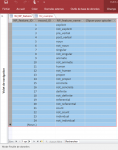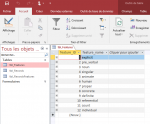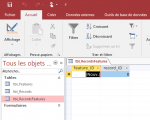Dear all,
First of all, I'm sorry if I haven't posted this in the right section. I'm not sure which category my problem falls into.
My form contains a series of checkboxes (e.g. "animate", "human", "concrete", "definite"...). I want to assign numerical values to my answers in order to calculate what I call the degree of salience of the sentences I'm studying (I work in Linguistics): for example, a checked checkbox is worth 1, and an unchecked checkbox is worth 0. I would then be able to classify the examples in my DB according to the following scale:
0-3 (checked checkboxes): low salience
4-7 (checked checkboxes): medium salience
8-11 (checked checkboxes): high salience
I've been looking all over the internet for an answer, there was talk of "IIF statements" and "Switch" functions, but I keep getting syntax errors, so I guess I'm doing it all wrong.
Can you help me?
Thank you very much!
First of all, I'm sorry if I haven't posted this in the right section. I'm not sure which category my problem falls into.
My form contains a series of checkboxes (e.g. "animate", "human", "concrete", "definite"...). I want to assign numerical values to my answers in order to calculate what I call the degree of salience of the sentences I'm studying (I work in Linguistics): for example, a checked checkbox is worth 1, and an unchecked checkbox is worth 0. I would then be able to classify the examples in my DB according to the following scale:
0-3 (checked checkboxes): low salience
4-7 (checked checkboxes): medium salience
8-11 (checked checkboxes): high salience
I've been looking all over the internet for an answer, there was talk of "IIF statements" and "Switch" functions, but I keep getting syntax errors, so I guess I'm doing it all wrong.
Can you help me?
Thank you very much!





